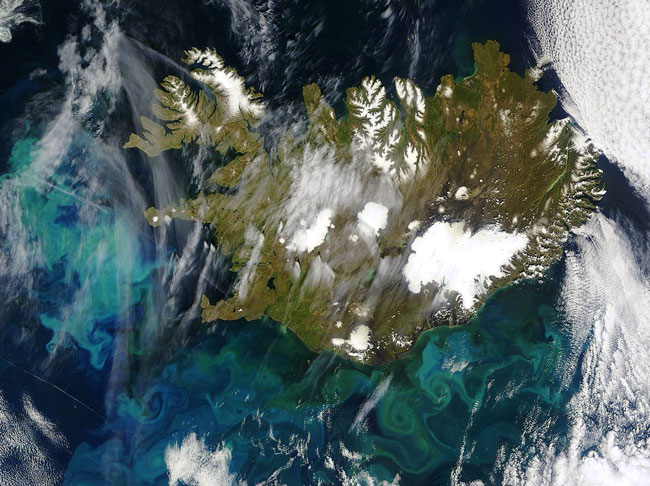
MODIS true color image of Iceland, 21 June 2004.
MODIS often captures images of phytoplankton blooms. This particular bloom is in the North Atlantic off the southern shores of Iceland, and is made up of trillions of what are reported to be Emiliana huxleyi, the most abundant of coccolithophore species. On land, summer's warm weather have reduced Iceland's snow and ice to patches and fields across the island. Snows branch out across the spines of fjords on the northern end of the island, while Iceland's four permanent ice caps - Langjokull and Hofsjokull in the interior west, Myrdalsjokull on the southern coast, and Vatnajokull on the eastern coast - stand out against the brown earth.
Coccolithophores are a type of phytoplankton that surround themselves with white calcium carbonate shells. When the coccolithophores gather in large-enough concentrations, they appear to turn the water turquoise in color. For more information on these types of blooms and more additional images of these types of events, please visit the Earth Observatory. This true-color Terra MODIS image was acquired on June 21, 2004.
Text and image courtesy of NASA's MODIS Land Rapid Response Team.